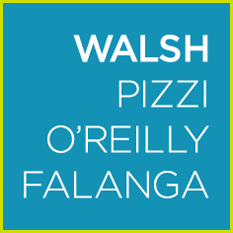Client Alert – United States Department of Labor Issues Q&As on the FFCRA’s Paid Parental Leave Provisions
The United States Department of Labor (“DOL”) answered some key questions regarding the Families First Coronavirus Response Act, H.R. 6201 (“FFCRA”), which we covered in an earlier post here. While the DOL’s Q&As address many questions raised by the FFCRA, additional updates may be forthcoming, and we will continue to monitor further guidance issued by the DOL.
Below are some of the most pertinent highlights:
- The Small Business Exemption
Businesses with fewer than 50 employers may seek an exemption from the FFCRA requirement to provide expanded family and medical leave due to school or day care closures or child care provider unavailability for COVID-19 related reasons if an authorized officer of the business can establish one of the following: (1) the financial obligation of providing leave would exceed available business revenues and cause the business to cease operating at a minimal capacity; (2) the loss of the employee’s specialized skill, knowledge or responsibilities would result in a substantial risk to the business’s financial health or operational capabilities; or (3) there are insufficient workers available to assume the responsibilities in order for the business to operate at minimal capacity.
A business must document why it believes it meets the exemption criteria but should not send any documentation to the DOL at this time. Further information on the exemption and how it will be applied is expected in the DOL’s forthcoming regulations.
- Documentation for FFCRA Paid Sick Leave and Extended Family and Medical Leave
Employers may require employees to provide documentation to receive paid sick leave or expanded family and medical leave under the FFCRA. These records can include either a published quarantine order or a doctor’s note prescribing self-quarantine. Employees who seek family leave because their child’s school or daycare is closed, or who seek to take leave for another existing qualifying reason under the Family and Medical Leave Act (FMLA), must provide the medical certifications required under the FMLA. Employees taking leave for childcare should provide written notice of school or daycare closure, such as an announcement from the school or news article. Employers who seek reimbursement for the costs of leave provided under the FFCRA through refundable tax credits must retain this information and may need to file it with the IRS when seeking the tax credit.
- Intermittent FFCRA Leave
An employee may take FFCRA leave intermittently while teleworking, if the employer allows it. While teleworking, an employee may take intermittent leave in any increment, provided the employer agrees. For an employee who is working at his or her usual job site, paid sick leave must be taken in full-day increments and can only be taken intermittently to care for a child whose school or day care is closed due to COVID-19, if the employer agrees. Employees who are not teleworking may take intermittent paid family leave under the FFCRA, but only with the employer’s permission.
- FFCRA Leave Unavailable If/When a Workplace Shuts Down
Paid leave time is not available if an employer furloughs an employee or shuts down, whether temporarily or permanently, and stops paying the employee. If an employee was receiving paid leave before the furlough or closure, the employee is no longer entitled to paid leave as of the date of furlough or closure. If an employer reduces an employee’s scheduled work hours, the employee cannot use FFCRA leave for the hours he or she is no longer scheduled to work. Employees may seek unemployment insurance under these circumstances.
- FFCRA Leave Is Provided in Addition to Other Available Paid Leave
Employers cannot require employees to utilize employer-provided paid time off prior to taking FFCRA leave. Employees must choose to utilize either FFCRA leave or employer-provided paid time off (i.e. vacation and sick days) and may not use both leaves simultaneously unless the employer and employee both agree. If an employer permits an employee to take both leaves simultaneously to supplement his or her income, the employer may only claim a tax credit for the cost of the FFCRA portion of the leave.
- FMLA and EFMLEA Can Only be Used for a Combined Total of 12 Weeks in 12-month Period
If an employee has previously taken FMLA leave, he or she can also receive paid leave under the Emergency Family Medical Leave Expansion Act (“EFMLEA”), however, the combined total leave cannot exceed 12 weeks in a 12-month period of time. Once the 12 weeks have been exhausted, whether used entirely under FMLA, or under the EFMLEA or a combination of the two, no additional leave is available.
For further information about these or other issues arising out of the COVID-19 crisis, please contact Caitlin Cascino at [email protected] or (973) 757-1024 or Mariel Belanger at [email protected] or (973) 757-1039.
Walsh Pizzi O’Reilly Falanga LLP has prepared the content of this alert for general informational purposes. The content should not be considered advice, recommendations, or an offer to perform services. You should not act upon any information provided in this alert without seeking professional legal counsel from an attorney licensed to practice law in your jurisdiction. No representations are being made as to the completeness or accuracy of the information contained herein.

